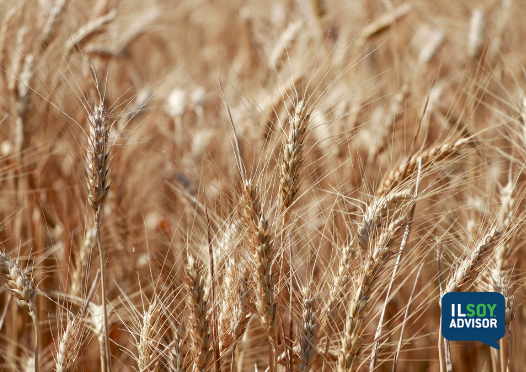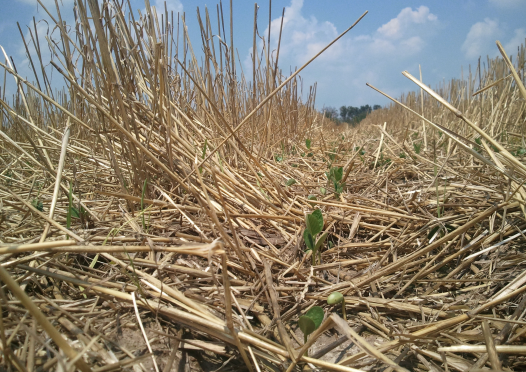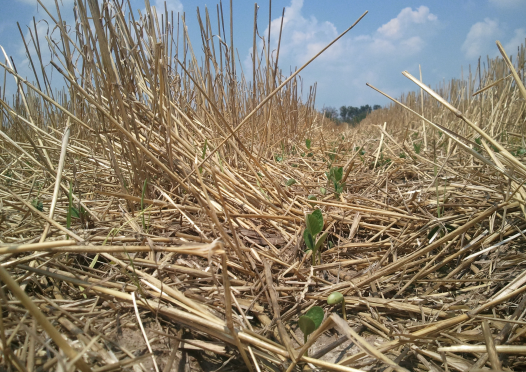ILSOYADVISOR POST
Agronomy: Getting Wheat Off to a Good Start
The success of your double crop enterprises in 2017 begins with planning for and planting wheat this fall.
Looking to 2017 and our double crop soybeans begins with a good start to our fall 2016 winter wheat crop. What we do now can have a direct effect on the success of our double crop beans next year. So let’s looks at some time-proven tips to insure success not only in our wheat crop but potential success in out double crop soybeans.
First is to ensure that we get a good even distribution of harvested residue this fall. Makings sure we have a properly adjusted combine to manage the residue not only in the machine but that we can evenly distribute that residue behind the machine. Good even distribution of residue will help to ensure good seed to soil contact of seed and fast and even emergence of our wheat.
Next we need to do a good job with seed selection. Spread risk by planting a package of wheat varieties if acreage allows. Select varieties based on maturity and placement just like we do corn or beans. Pay attention to disease ratings for wheat following corn. Select a quality seed treatment to insure early seedling vigor.
Also make sure your soil fertility is in good shape and apply phosphorus (P) and potassium (K) as needed to meet your yield goals. Phosphorus is most important in establishing a good stand in the fall on the wheat. Cool soils inhibit P uptake so it is important to make sure we have a good P soil test and apply P as needed. Don’t go overboard on N applications in the fall. 20-40#/ac of N is sufficient for fall growth and most of this can come from the DAP (diammonium phosphate) application (18-46-0).
Prepare a proper seedbed to insure good seed to soil contact. If you are a no-tiller, ensure that you have the ability to open the soil and close the seed slot properly and firm the soil around the seed. Also insure that no-till drills can handle the residue left from the previous crop.
Last are planting date and seeding rates. With the late planting across most of southern Illinois planting after the Hessian fly-free date will not be too big an issue. Normally we would like to see 1.2 to 2 million seeds per acre dropped early in the season. With no till and as we get later in the season that rate needs to increase to 1.6-2.0 million seeds to compensate for possible lower stand establishment. Properly calibrating your drill can help insure greater accuracy in hitting your seeding target.
Getting a good even wheat stand is the first step in our process to build a profitable double crop enterprise in 2017. This foundation is where we want to build not only good wheat yields but good bean yields as well.
Kelly is serving as the Illinois Soybean Association Double-Crop Specialist. He was raised on the family farm in Benton, Illinois and graduated from Southern Illinois University (SIU)-Carbondale with a BS in Agriculture Education and Mechanization, and a Master’s of Science (MS) in Plant and Soil Science. Kelly has spent 25 years as a soil fertility agronomist and precision agriculture consultant in southern Illinois while also spending 4 years as a Farm/Agronomy Manager and GIS Coordinator for a large farm in southeastern Illinois. He is a Certified Professional Agronomist and a Certified Crop Advisor.





Comments
Add new comment